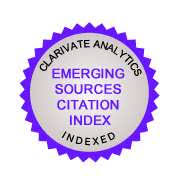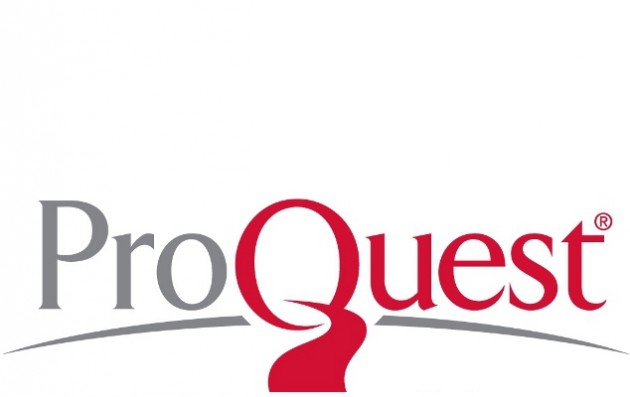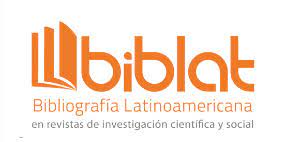Psychological characteristics of students' perception of innovation in the training process
DOI:
https://doi.org/10.17162/au.v13i1.1321Keywords:
innovation, perceptual mechanisms, personality traits, initiative and managementAbstract
In this research, the psychological issues of the perception of innovations of students from different specialties were studied through various methods and questionnaires. 162 students studying at different universities and having different professional directions participated in the research. The study showed that if the preferred innovations in education are related to the introduction of new technologies, this factor for society is related to the presence of high wages and acceptable working conditions. It was concluded that a number of personality traits, including initiative and practicality, play an important role in the perception of innovations. However, in the process of accepting innovation, risk-taking and psychological preparation that allows to perceive innovations are the main leading elements. The study showed that there are differences in the process of perception of innovation between students with high and low academic achievement, and these differences are significant at the p ≤ 0.01 level. For students with high practical activities and academic abilities, innovation acceptance is characterized by practical and entrepreneurial styles, and for students with high academic and practical abilities, the leading perception aspect is characterized by practical and managerial qualities.Downloads
References
Akalın, Sh. A. (2007). Innovation, innovation: Innovation. Journal of Turkish Language, Language and Literature, 93 (666), 483-486. https://¬turko¬loji.cu¬.edu.-tr/20SORUNLARI/sukru_haluk_akalin_inovasyon_yenilesim.pdf
Ajzen, I. (1991). The theory of planned behavior.Organ. Behav.Hum.Decis.Pro-cess., 50 (2): 179-211. https://doi.org/10.1016/0749-5978(91)90020-T
Anastasi, A. (1982). Psychological testing: In 2 books. Ed. K. M. Gurevich, V. I. Lubovsky. Book.1. http://elcat.pnpu.edu.ua/docs/%D1%81.pdf
Aliyev B. H., & Jabbarov R. V. (2008). The problem of personality in education. Baku. https://lsu.edu.az/new/LSU-Library/lb/Student_/psychology.php
Belousova, A. K. (2002). Self-organization of joint mental activity. Rostov-on-Don, Russian State Pedagogical University. https://www.dissercat.com/content/samoorganizatsiya-sovmestnoi-myslitelnoi-deyatelnosti
Bagozzi, R. (2007). The legacy of the technology acceptance model and a proposal for a paradigm shift. J. Assoc. Inf. Syst.Online, 8 (4): 244-254.https://cit¬eseerx.ist¬.psu.edu¬/vie-wdoc¬/¬download?doi=10.1.1.361.5863&rep=rep1&type=pdf
Baynev, V. F. (2007). Innovative management of the university as a factor in ensuring its competitiveness. Belarusian Economic Journal, 4 (1) : 81.https:/¬/www.¬elibrary¬.ru/it¬em.-asp?¬id=27260589
Davis, F., Bagozzi, R. & Warshaw, P. R. (1989). User acceptance of computer techno¬logy:¬ a comparison of two theoretical models. Manag. Sci., 35 (8): 982-1003 https://¬doi.org/-10.¬128¬7/mnsc.35.8.982
Demirci, A. E. (2012), Key Concepts, Innovation Management, Ed: Cevahir Uzkurt and Ahmet Emre Demirci. Eskişehir: Anadolu University Publishing. https://d¬ocp-layer.biz.tr/1133488-T-c-anadolu-universitesi-yayini-no-2602-acikogretim-fakultesi-yayini-no-1570-yenilik-yonetimi-yazarlar-yrd-doc-dr-ahmet-emre-demirci-unite-1.html
Eroshin, V. I. (1996). Modern economic situation in education. Pedagogy, 5 (1):. 55-59. https://www.dissercat.com/content/ekonomicheskiemy-vysshego-obrazovaniya
Fishbein, M. & Ajzen, İ. (1975). Belief, Attitude, Intention and Behavior: an Int¬rodu¬ction to Theory and Research. , Massachussetts: Addison-Wesley. https://¬people.umass¬.edu/-aizen¬/f&a1975.html
Furler, E. (2013). Personality similarity and life satisfaction in couples. Journal of Research in Personality, 47: 369-375
Fouka, G. & Mantzorou, M. (2011). What are the major ethical issues in conducting research? Is there a conflict between the research ethics and the nature of nursing? Health Science Journal, 5 (1), 3-14. https://www.coursehero.com/file/p7fptdr/Fouka-G-Mantzorou-M-2011-What-are-the-major-ethical-issues-in-conducting
Gedranovich, B. A.(2006). Educational activity of a higher educational institution: innovative methods of management. Minsk. https://¬elib.bsu¬.by/bit¬stream/1¬2345¬6789/-11013/1/AO_15_2009.pdf
Grevenstein, D. & Bluemke, M. (2015) Can the Big Five explain the criterion validity of Sense of Coherence for mental health, life satisfaction, and personal distress? Personality and Individual Differences, 77, 106-111. DOI: 10.1016/j.paid.2014.12.053
Gorghiu, G., Anghel, G. A., & Ion, R. (2015). Students’ perception related to a responsible research and innovation demarche. Procedia - Social and Behavioral Sciences, The 6th International Conference Edu World 2014: Education Facing Contemporary World Issues, November 7 – 9, 600-605. doi:10.1016/j.sbspro.2015.02.166.
Ilyin, E. B. (2004). Motivation and motives. SPB: Peters. ¬https://¬www.¬academ¬ia.¬edu/¬4305¬26-248B
Ilyina, N. A. (1985). Attitude to innovations in production teams. Cand. dis.Лeninqrad. https://studizba.com/lectures/psihologiya/organizacionnaya-psihologiya
Innovation management (2001). Textbook. Ed. L.N. Ogolevoy. M.: İnfra-M. https://socioline.ru/pages/l-ogoleva-innovatsionnyj-menedzhment
Kovalenko, E. M. (2011). Innovative educational technologies and their implementation at the university. http:// www. universitys. ru/j/images/stories/nir/10/kovalenko. pdf/
Jabbarov R., Valiyeva Y., Nasirova N. & Kazımova, K. (2020) The creation of fee¬dback in training as a mobilizing fac¬tor for the cognitiveactivity of students. Revista de Inve¬st¬ig¬a-ción Apuntes Un¬iv¬e¬r¬si¬tarios, 10 (3):207-221 https://ap¬untesu¬niversitarios¬.upeu.ed-u.pe/index¬.php/reva¬pun¬tes/¬article/view/481/556
Krasovsky, Y. D. (2003). Organizational behavior. M.: Unıty-Dana. https://¬ruco¬nt-.ru/efd/352390
Sazonov, B.V. (1980). Activity approach to innovation. Social factors of innovations in organizational systems. Moscow: Delo. http://www.lab1-3.narod.ru/page5.html
Kelchevskaya, N. R. (2004). Formation of an innovative strategy for the development of educational institutions in the “university-enterprise” system: Yekaterinburg. https://-eprin¬ts.oa.edu.ua/7180/1/27.pdf
Keengwe, T., Kidd, L. & Kyei-Blankson (2009). Faculty and technology: implications for faculty training and technology leadership J. Sci. Educ. Technol., 18 (1): 23-28 https://citeseerx.ist.psu.edu/viewdoc/download?doi=10.1.1.484.9652&rep=rep1&type=pdf
Kroz, M. V. (1988). Socio-psychological characteristics of the innovative installation. Psychological Journal, (9),2. https://nauka-pedagogika.com/psihologiya-19-00-07/disser¬tac¬iya-professionalnye-ustanovki-v-deyatelnosti-pedagogov
Khabaeva L. M., Abaeva I. V., Gioeva, E. P. (2015). Problems of development achievement motivation among student youth of north Ossetia. Modern problems of science and education, 1 (1), 56-66. https://science-education.ru/ru/article/view?id=17893
Markov, A. V. (2005). State innovation policy: theoretical foundations and implementation mec¬hanism. Law and Economics. Minsk. https://cyberle¬ninka.ru/a¬rticle¬/n/kakoy-byt-natsio¬na¬lnoy-innovatsionnoy-sisteme-belarusi
Mustyatsa, A. G. (2009). The mechanism of formation and implementation of innovative strategies of industrial enterprises: world experience and Russian practice. Moscow https://www.dissercat.com/content/mekhanizm-formirovaniya-i-realizatsii-innovatsionnykh-strategii-promyshlennykh-predpriyatii
Meade N. & Islam T. (2006). Modelling and forecasting the diffusion of innovation–A 25-year review. Int. J. Forecast, 22 (3): 519-54. https://www.sc¬ienced¬irect¬.com/s¬cien¬ce/art-icle/abs/pii/S016920700600019
Manika, D. (2021). How Pride Triggered by Pro-environmental Technology Adoption Spills Over into Conservation Behaviours: A Social Business Application Technological Forecasting and Social Change, 172 (9), 121005. DOI:10.1016/j.techfore.2021.12100
Methodology for diagnosing the degree of readiness for risk by Schubert (2018). The psychology of a happy life. https://psycabi.net/testy/273-metodika-diagnostiki-stepeni-goto¬vnosti-k-riskushubert-test-sklonnosti-k-risku-shuberta
Maksyanova, T. V. (2010). Features of the implementation of open innovative technologies in the system of higher professional education. Innovations, 07 (141): 63-66. https://cyberleninka.ru/article/n/osobennosti-realizatsii-otkrytyh-innovatsionnyh-tehnologiy-v-sisteme-vysshego-professionalnogo-obrazovaniya
Molchanova, E. L. (2005). Thinking styles of successful and unsuccessful managers. Graduation 16. qualifying work. Rostov-on-Don. https:/¬/www.researchgate.net › publication
Onwuegbuzie, A., Leech, N. L., Slate, J. R., Stark, M., Sharma, B., Frels, R. & Combs, J. P. (2012). An exemplar for teaching and learning qualitative research. The Qualitative Report, 17 (1), 16-77. http://www.nova.edu/ssss/QR/QR17-1/onwuegbuzie.pdf
Pasmurtseva, N. N. (2008). Formation and implementation of an innovative strategy for the development of an enterprise: on the example of metallurgical production and the production of finished metal products in the Sverdlovsk region. Ekaterinburg. https://-www.¬diss¬ercat.com/content/formirovanie-i-realizatsiya-innovatsionnoi-strategii-razvitiya-predpriyatiya-na-primere-meta
Pavlou, P. A. (2003). Consumer acceptance of electronic commerce: integrating trust and risk with the technology acceptance model. Int. J. Electron. Commer., 7 (3) : 101-134 https://doi.org/10.1080/10864415.2003.11044275
Gugueva, Z. S. (2000). Thinking style of employees of the organization with different labor motivation. Final qualifying work, Rostov-on-Don.http://jour.vsu.¬ru/editions/¬journals/-ves¬tnik_filology/2018_3_vestnik.pdf
Rakovskaya, O. L. (2012). Innovative strategies for the development of the educational process. Bulletin of Higher School, 10, 61-64. https://istina.¬msu.ru/jou¬rnals/975¬93/?p=7
Rogers, E. M., Singhal, A. & Quinlan, M. M. (2014). Diffusion of innovations. An integrated approach to communication theory and research. London: Routledge. https://¬www.¬tayl-orfrancis.c¬om/cha¬pters/edit/10.4324/9780203710753-35
Roberts, R., Flin, R. (2020). Unlocking the Potential: Understanding the Psychological Factors That Influence Technology Adoption in the Upstream Oil and Gas Industry. SPE Journal, 25 (1): 515-528 https://doi.org/10.1177/1071181319631105
Sovetova, O. S. (2000). Fundamentals of social psychology of innovation. St. Petersburg: Publishing House of St. Petersburg University. https://www.¬dissercat.com/c¬ontent/-sotsial¬naya-¬psikhologiya-innovatsii-osnovaniya-issledovaniya-problemy
Santo, B. (1990). Innovation as a means of economic development. Moscow: Progress. https://www.ozon.ru/product/innovatsiya-kak-sredstvo-ekonomicheskogo-razvitiya
Suldo, S., Minch, D. R. & Hearon, B. V. (2014). Adolescent life satisfaction and personality characteristics: Inv¬est¬igating relationships using a five factor model. Journal of Happiness Studies, 1-19. Doi: 10.1007/s10902-014-9544-1
Tatarinova, L. V., Rerke, V. I. & Bubnova, I. S. (2019). Revista Espacios, 40 (33). 6-12. http://www.revistaespacios.com/a19v40n33/19403306.html
Tereshchenko, V. M. (2001). Marketing: New technologies in Russia. SPb: Piter. https://www.libex.ru/detail/book471734.html
Titov, A. B. (2001). Marketing and innovation management. SPb.: Piter. https://alta-irbook.com/books/117044-marketing-i-upravlenie-innovaciyami.html
Venkatesh,V., Davis, F. (2000). A theoretical extension of the technology acceptance model:four longitudinal field studies. Manag. Sci., 46 (2): 186-204. https://d¬oi.org/¬10.1-287/mnsc.46.2.186.11926
Weinbaum, C., Landree, E., Blumenthal, M. S., & Gutierrez-Gaviria, C. I. (2019). Ethics in Scientific Research: An Examination of Ethical Principles and Emerging Topics. Santa Monica. https://ww¬w.rand.¬org/¬pubs/¬resear¬ch_¬repo¬rts/¬RR2912.html.
Jankowski, K. P. (2001). Organization of investment and innovation activities Mukhar: Piter. http://opac.¬hse.ru/absopac/app/webroo¬t/index.php?url=/notices/i¬ndex¬/IdNo¬tic¬-e:30391/Source:default
Downloads
Published
How to Cite
Issue
Section
License
Copyright (c) 2022 Tunzale Verdiyeva

This work is licensed under a Creative Commons Attribution 4.0 International License.
- The authors retain their copyright but assign to the journal the right of the first publication, with the work registered under the Creative Commons attribution license, which allows third parties to use the published information as long as they mention the authorship of the work and that it was first published in this journal.
- Authors may make other independent or additional contractual arrangements for non-exclusive distribution of the version of the article published in this journal (eg, include it in an institutional repository or publish it in a book) as long as it clearly indicates that the work was first published in this journal.
- Authors are encouraged and advised to publish their work on the Internet (for example, on institutional or personal pages) before and during the review and publication process, as it can lead to productive exchanges and a greater and faster dissemination of the published work (see The Effect of Open Access).










